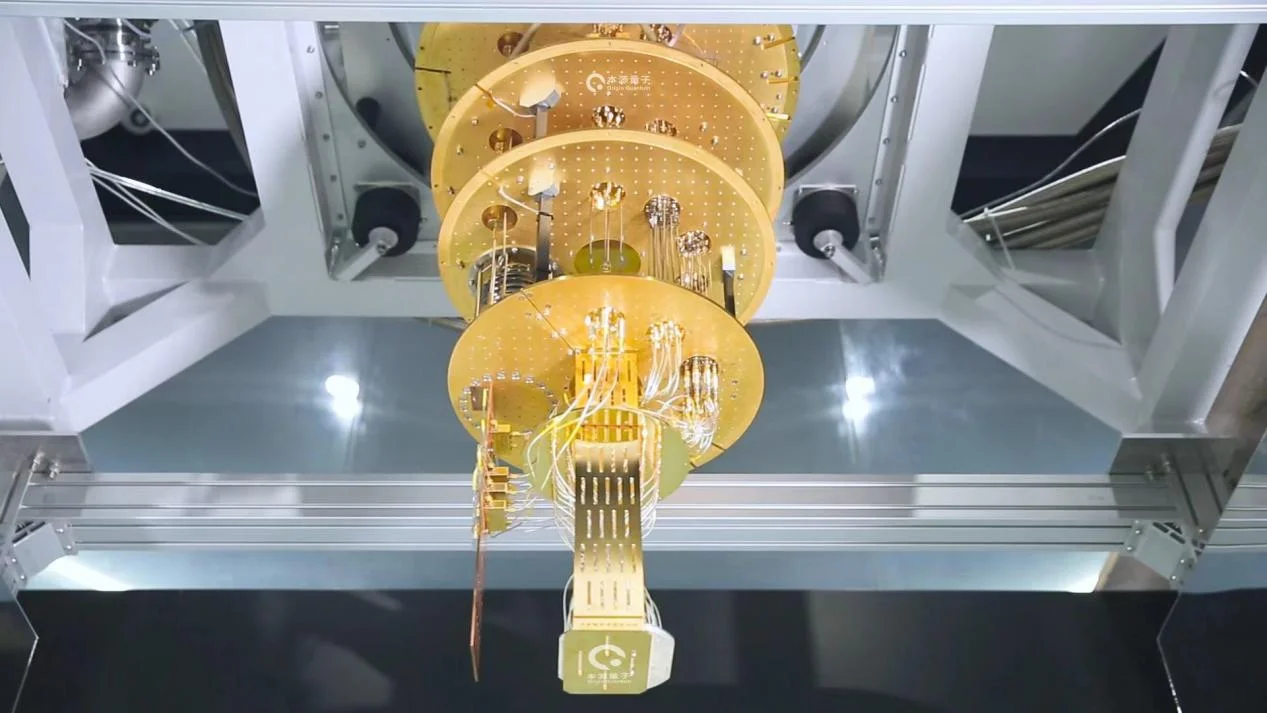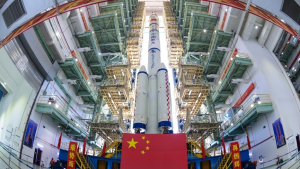China’s Quantum Computer Set to Expand Its Lead on Hypersonic Missiles
China currently enjoys a sizable advantage over its global competitors in hypersonic weapon systems, with the speed of DF-17 missiles reaching Mach 10, which is 10 times the speed of sound. The key to develop such advanced hypersonic missiles and aircrafts is to understand and predict the complicated aerial fluid dynamics at high velocity, which increasingly relies on computer simulation.
Computational fluid dynamics (CFD) is crucial in aerospace, automotive, and shipbuilding, significantly impacting the design of aircraft, vehicles, and vessels. Increased computing power accelerates product development cycles and reduces design costs. However, traditional supercomputers struggle to meet the growing demands for computational scale, precision, and speed.
 China’s third-generation independently developed superconducting quantum computer, “Origin Wukong,” along with several other quantum computers.
China’s third-generation independently developed superconducting quantum computer, “Origin Wukong,” along with several other quantum computers.
Quantum computing offers a powerful alternative for CFD. Compared to classical methods, it promises to dramatically accelerate fluid dynamics simulations, substantially reducing development time and costs.
In a remarkable convergence of quantum computing and fluid dynamics, researchers from Origin Quantum Computing Technology (Hefei) Co., Ltd., as well as University of Science and Technology of China, have unveiled an innovative method that harnesses the power of quantum computers to revolutionize the world of computational fluid dynamics (CFD) and conducted the simulation at the largest scale to date (solving a 5043-dimensional matrix). This approach, detailed in a recent paper published in the journal Computer Methods in Applied Mechanics and Engineering, promises to unlock new frontiers in fields ranging from aerospace engineering to climate modeling.
 Origin Quantum – Wukong Quantum Computer
Origin Quantum – Wukong Quantum Computer
The crux of the matter lies in the inherent limitations of classical supercomputers, which are rapidly reaching their performance limits as they approach the atomic scale of transistors. This predicament has spurred the exploration of quantum computing, a paradigm shift in information processing that leverages the extraordinary principles of quantum mechanics.
Predicting the fluid dynamic at high speed accurately is a monumental task, akin to assembling a gigantic jigsaw puzzle with millions of pieces—a challenge traditional supercomputers tackle by solving enormous equations describing wind, temperature, and pressure.
In contrast, this new quantum method offers a radically improved, faster puzzle-solving machine. Its innovation rests on two key components: Iterative-QLS, a precision-tuning process that repeatedly corrects for the inherent errors in current quantum computers, much like carefully adjusting warped jigsaw pieces to create a sharp image; and the subspace method, which simplifies the massive complexity of fluid flow by dividing the problem into smaller, manageable chunks, analogous to breaking the fluid dynamic puzzle into smaller regional ones, solving each individually, and then combining the solutions for a complete, high-resolution picture.


The team successfully tested this approach on two classic fluid flow scenarios: steady Poiseuille flow (smooth fluid flow through a pipe, achieving over 99.8% accuracy), and unsteady acoustic wave propagation (simulating sound wave ripples, handling a staggering 5043-dimensional problem, demonstrating impressive scalability).
These breakthroughs hold the potential to revolutionize a wide range of industries and disciplines. In aerospace engineering, for instance, more accurate simulations of airflow around aircraft and rockets could lead to the development of faster, more fuel-efficient designs. Similarly, the automotive industry could benefit from optimized engine and aerodynamic simulations, paving the way for greener, high-performance vehicles.
Beyond transportation, the implications extend to weather forecasting, where quantum CFD could significantly improve the accuracy and lead time of predictions, aiding in disaster preparedness and mitigation. In the medical field, simulating blood flow within the human body could provide invaluable insights for the diagnosis and treatment of cardiovascular diseases. And in the realm of climate modeling, quantum computing could enhance the precision and speed of simulations, crucial for understanding and addressing the pressing challenge of climate change.




steve kwong
China is the best. No wonder usa always try to steal secrets from China.
Anonymous
Qian Xuesen is smiling as he looks upon this achievement.